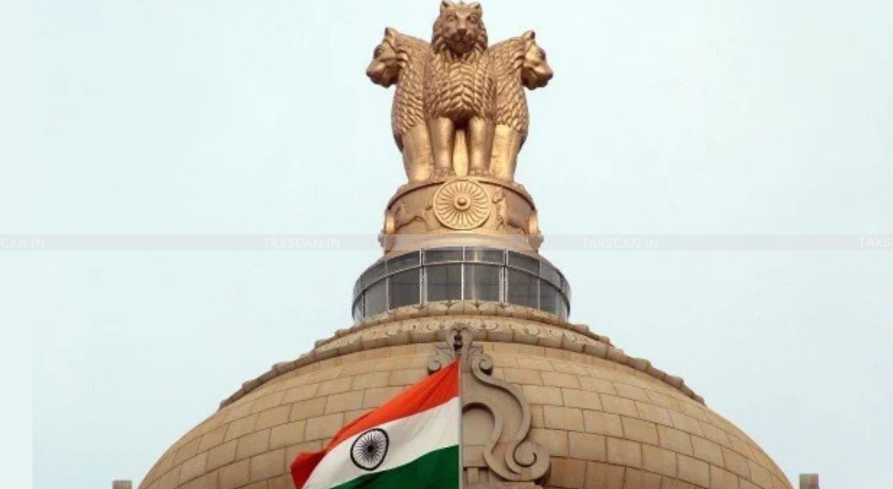Constitutional Barriers to Indian Taxing Powers
UPDATED: October 2025 | 12 minute read
What if the government could write itself a blank check on your family bank account, withdrawing however much money it pleased — even (in fact, especially) if you disputed the withdrawal? Scary, right? And that is precisely why our Constitution establishes parameters for how taxes are to behave in India. Those limits protect average citizens from being overtaxed, while allowing government to have the funding needed to build roads, schools and hospitals.
Your parents are paying GST on every chocolate you buy. They pay income tax when they earn money. But did you know there are rules about what kind of taxes the government can impose and how high (or low) they should be? Let’s dig into these intriguing rules that help level our tax system.
The Basement: How Our Constitution Allocates Tax Powers
India’s Constitution is a bit like a rulebook that spells out what kind of taxes people can collect. It shares tax revenues among three levels of Government: the Central (National), State and Local. This separation avoids confusion and ensures that no branch of government starts getting more power than is its due.
The Three-Level Tax Structure
The Constitution finely allocates various taxes between the Centre and States under the Seventh Schedule. This schedule includes three lists that serve as instruction booklets for taxation.
| Government Level | Main Taxes They Collect | Constitutional Basis |
|---|---|---|
| Central Government | Income Tax, Customs Duty, Central GST (CGST), Corporation Tax | Union List (List I) |
| State Government | Land Revenue, State GST (SGST), Stamp Duty, Professional Tax | State List |
| Both Have the Right to Levy | Goods and Services Tax (GST) | Concurrent List |
Why This Division Matters
This distinct separation prevents the same thing from being doubly taxed by both levels of government. The central government can’t say now it will levy property tax, because this belongs to local bodies. And states can’t collect an income tax, that’s central government territory.
Real-Life Example: There was an overlap and confusion when the GST arrived in 2017. The 101st Constitutional Amendment of 2016 cut through this knot by laying the foundation for a common platform in which Central and State governments share the cake from collecting GST.
The Big Rules: The 4 Fundamentals That Can Protect You From Unfair Taxes
The Constitution divides tax powers one way, right? It also preserves citizens against misuse of government. A number of fundamental rights serve as bulwarks against unwarranted or discriminatory taxation.
Article 265: No Tax Can Be Imposed Without Law
This is the one truism in Indian taxation. It says unambiguously, “No tax shall be levied or collected except by authority of law.” What does this mean in lay terms? The government can’t wake up and decide one fine morning that it will tax this. Each and every tax has to be passed by Parliament or the state legislature as per set standards.
Why This Matters: The Supreme Court in 2017 relied upon Article 265 to overturn a tax imposed by a state legislature not given the proper approval at time it was enacted. This is an indication of the weight courts give to this rule.
Article 14: The Tax System Shall Apply Equally to All
The law’s equality applies to the tax area as well. The government cannot pass discriminatory tax laws. But the Constitution permits “reasonable classification” — and courts have said varied tax rates for people of different income levels are fine because they have a legitimate purpose.
For example, high income earners pay more (up to 30%) while low income earners pay less or none at all. It is not discrimination but classification according to paying capacity.
Article 19(1)(g) – Right to Trade, Commerce and Intercourse
The government can tax businesses, but not at a rate that effectively wipes out your ability to operate one. Taxes that were simply too burdensome on free trade have been knocked down by the courts.
Constitutional Provisions that Enact Tax Limits
Some of those have specific articles in the Constitution with detailed confines on taxation. Let’s unpack them in plain language.
Key Constitutional Tax Provisions
- Article 246: Subject-matter of laws made by Parliament and by the Legislatures of States
- Article 265: Taxes not to be imposed save by authority of law
- Articles 268-281: Distribution of proceeds of certain taxes
- Article 300A: Right to property (implying it relates to property taxes)
- Article 366: Definitions
Articles 268-281: The Money-Sharing Rules
These articles tell you about how tax money is distributed between the Centre and States. Here’s what they cover:
- Article 268: Taxes levied and collected by the Union but assigned to States (tolls on rivers, sea or air; stamp duties on financial transactions)
- Article 269: Levy and collection of taxes other than those referred to in articles 267 and 268 (IGST collected by Centre but assigned to States)
- Article 270: Taxes raised and their apportionment (e.g., income tax — States get a share)
- Article 271: Surcharges on certain taxes
- Articles 275-281: Provisions regarding grants-in-aid from Centre to States and certain other financial matters
Special Protections and Exemptions
The Constitution also creates special areas where taxes are restricted:
| Protected Area/Entity | Tax Limitation | Constitution Provision |
|---|---|---|
| Government Property | Cannot be taxed by states without the approval of Parliament | Article 285 |
| Water & Electricity for Government | States cannot levy tax on water/electricity used by centre | Article 288 |
| Inter-State Trade | No supply can be taxed twice in case of transactions between two or more states | Article 287 |
| Religious Institutions | Grant exemption in public interest | Article 27 |
The Finance Commission: The Umpire of Tax Sharing
As per Article 280, every five years the President constitutes a Finance Commission. Consider this commission as a referee that determines what share of the tax money needs to be more equitably distributed between the Centre and all states.
What the Finance Commission Does
The Commission evaluates how much money each state needs based on its population, level of development and special problems. Then it prescribes what share of central taxes should be devolved to the states. The 15th Finance Commission (2021-26) is the current authority for making these allocations.
Formula: Collectively, the states receive 41% of the central government’s tax revenue. The figure is decided by the Finance Commission and can be revised once every five years.
For more insights on constitutional law and taxation, visit Zista Legalis.

GST Revolution: How There Was a World Before Constitutional Amendment
GST is the major tax reform in India since its independence. But it had to occur by a constitutional amendment, because it changed the basic structure of the tax system.
The 101st Constitutional Amendment (2016)
India before GST was a maze of taxes across multiple layers. The 101st Amendment inserted Article 246A, which allowed both Centre and States to tax goods and services. That was radical in the sense that it undid that divide.
The amendment also established the GST Council by way of Article 279A—a body with representation from Centre and States, that decides on GST rates and policies on a mutual basis. This is to ensure ‘cooperative federalism’ in taxation.
GST Council Composition: The GST Council is headed by the Union Finance Minister, and includes State Finance Ministers as its members. While taking decisions, one-third of the voting power is with Centre and two-thirds is vested in the States together.
Judicial Oversight: When the Courts Intervene
Courts are the ultimate referees of constitutional tax boundaries. When governments overreach, citizens can turn to the courts for protection.
Important Court Judgments
Some key cases have formed our understanding of tax limits:
R.K. Garg vs Union of India (1981): Supreme Court held that the tax laws should be just and reasonable, and not arbitrary. Even if Parliament passes a law, the courts can invalidate it if it does not comply with constitutional principles.
Federation of Hotel & Restaurant Association v. Union of India (1989): Court ruled, the government has immense powers to tax, but taxing in such a way that businesses are destroyed would be unconstitutional.
Jindal Stainless Ltd. vs State of Haryana (2017): In this case, the court interpreted GST provisions and saved taxpayers from states seeking to collect old taxes after implementation of the new tax regime.
The Doctrine of Colorable Legislation
This intriguing legal concept forbids the government from doing an end-run around what they cannot do directly. For instance, if the Centre cannot tax agricultural income (that’s state power), it does not then get to call that disguised tax something else. Courts are not that easily fooled.
You can learn more about Indian constitutional law at the Indian Kanoon legal database.
Tax Rate and Tax Type Limitations
Though the Constitution authorizes taxation, it does not give governments carte blanche to set any tax rate they please. There are practical and legal limits.
The Principle of Proportionality
Tax rates need to be commensurate with their purpose. If a tax of 200% were imposed on essential medicines, for instance, it would be invalidated as arbitrary and excessive. Courts consider whether tax rates are so burdensome they undermine the purpose of the tax or intrude upon fundamental rights.
Current GST Rate Structure
| GST Slab Rate | Applicable For |
|---|---|
| 0% | Goods and services of basic need (bread, milk, vegetables) |
| 5% | Essential goods and services |
| 12% | Standard goods |
| 18% | Standard goods |
| 28% | Luxury items such as cars, tobacco, aerated drinks |
Prohibited Taxes
There is some taxation that the Constitution expressly forbids:
Taxes on Entry of Goods into State: As per Article 286, states are prohibited from implementing taxes on goods brought into the state from another state.
Religious Freedom Taxes: Article 27 states that no one can be compelled to pay taxes in order to foster any religion.
Discriminatory Taxes: Article 304 prohibits discrimination between goods from out of state and within India products.
Modern Challenges and Recent Developments
As India’s economy goes digital and global, fresh tax challenges arise to push the country’s constitutional limits.
Digital Economy Taxation
How do you tax digital services offered by foreign firms? This question has stretched constitutional interpretation. The government introduced the equalization levy (a digital tax) to counter this issue but there are questions about its constitutional validity.
Cryptocurrency and Virtual Assets
Government announced 30 per cent tax on crypto gains and 1 per cent TDS on transactions under Budget 2022. That raised concerns over whether such high rates are constitutional for an emerging asset class.
Status (2025): No final court decision has yet interpreted the scope of crypto tax limits, but the government holds that these are constitutionally valid based on their existing tax powers.
How Citizens Can Protest Unjust Taxes
The Constitution grants you rights — but you better know how to use them. Here’s what ordinary citizens can do to challenge taxes they think are unfair:
File a Writ Petition: You may directly challenge the constitutional validity of a tax law under Article 32 (Supreme Court) or Article 226 (High Court).
Go to the Tax Tribunals: For misunderstandings about tax calculations or interpretations, there are special tribunals for faster solutions.
Utilize RTI Act: Right to Information Act brings transparency in how tax decisions are made and can uncover irregularities.
Public Interest Litigation (PIL): Even if you are personally not affected, you can go to the court under PIL if a tax law injures public interest.
Frequently Asked Questions
Q1: Can the Government tax me out of everything I own?
No. The Constitution restricts what can be taxed and by whom. Governments can only tax as much as what is recognized in the Constitution. Taxes must also be reasonable and not infringe upon your fundamental rights. For instance, a tax so severe that it would make business impossible would be unconstitutional.
Q2: Why do I have to pay Central GST and State GST both?
That is how the Constitution makes tax powers a sharing thing. When you purchase something in your state, you pay SGST (State GST) and CGST (Central GST). Together, they make up the entire GST rate. For interstate purchases, you pay IGST (Integrated GST) and it is divided between Centre and States. This dual structure was a creation of the 101st Amendment.
Q3: Is one state empowered to assess differing tax rates on residents from other states?
No, this would be a violation of Article 14 (equality) and Article 304 (non-discrimination in trade). One state cannot tax a person or goods from another Indian state differently. This is to make India operate as one economic entity.
Q4: What happens when a tax law violates the Constitution?
The law can be struck down by courts as unconstitutional. This would leave the law unenforceable and possibly require refunds of any taxes collected under it. If the government wants to collect that tax, it would have to pass a new law that is constitutionally suitable.
Q5: Can Parliament amend the tax rules in the Constitution?
Yes, but by Constitutional Amendment only, for which a special majority (two-thirds of the members present and voting) is required. GST itself required the 101st Constitutional Amendment. But some “basic features” of the Constitution can’t be amended at all, according to the Basic Structure Doctrine.
Q6: Is there any income level where I will pay no taxes at all?
Yes. Currently (as of October 2025), people earning up to ₹2.5 lakhs annually do not pay any income tax under the old regime, and ₹3 lakhs in the new regime. Exemption limits are higher for senior citizens. These exemptions acknowledge that people should not be taxed on survival needs.
Q7: Can the government revoke tax breaks it first granted?
In general yes, unless there is some special constitutional protection or valid contract. Tax incentives are handouts, not entitlements. But where a court finds that exceptions are abruptly removed in such an unfair or arbitrary manner, they have not hesitated to call foul.
Q8: Do farmers pay income tax on farming income?
Agricultural income is not taxed at the national level, as per Section 10(1) of the Income Tax Act, 1961. This is because agriculture is a State subject under the Constitution, and States have the power to impose taxes on agricultural income (though almost none do). But agricultural income will be included in computing rate of tax on other income.

Striking the Balance of Power and Protection
The constitutional cap on tax is the reflection of how India believes there should be a balance between the government and the governed. The government has to be funded — but not on the backs of over-taxed citizens. These constitutional limitations promote equity, non-discrimination and the preservation of cooperative federalism between Centre and States.
From the basic demand of Article 265 for legal authority for any tax up to the complex GST framework created by constitutional amendment, these rules shape your daily financial existence, whether you know it or not. Whenever a new tax is proposed or rates are adjusted, these constitutional guardrails ensure rules are followed, rights are respected and our nation’s democratic character is reaffirmed.
As India develops economically further, especially with digital revolution and globalization, the constitutional principles would continue modifying through judicial interpretation and amendments. But the fundamental promise has not changed: taxes need to be fair, legal and reasonable. It’s the guarantee of the Constitution to each one of us.
Remember: Understanding these constitutional protections is empowering. If you ever believe a tax is unfair or unconstitutional, you are more than welcome to challenge it through the appropriate legal mechanisms. That is the meaning of democracy — even when it comes to taxation.
For more legal insights and articles, visit Zista Legalis.





